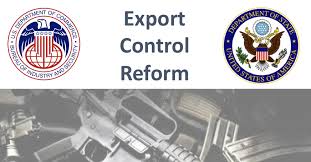Export Control Reform: Major Changes for ITAR Regulations for Firearms Industry

Colleen Hurson, Of Counsel at The Volkov Law Group joins us for her first posting on the blog concerning export control reform measures applicable to the firearms industry. Colleen has substantial experience in handling export control and sanctions compliance for clients subject to the State Department’s ITAR regulations and Commerce Department’s EAR regulations. Colleen can be reached at [email protected].
This week the Trump Administration is set to finalize new rules which will ease the regulatory and licensing burden on manufacturers of commercial firearms, ammunition and associated products. These items will be transferred from the United States Munitions List (USML) under the jurisdiction of the Department of State’s Directorate of Defense Trade Controls (DDTC) to the Commerce Control List (CCL) under the jurisdiction of the Commerce Department’s Bureau of Industry and Security (BIS). BIS has a much less onerous licensing system and does not impose a registration requirement on manufacturers.

The proposed rules were published in May 2018 and are expected to be completed and released in the next few weeks. The move of certain items from Categories I, II, and II of the USML to ECCN categories in the CCL 500 series (Categories I and III) and the 600 series (Category II) in the CCL, will complete the State Department’s review of all USML categories as a part of Export Control Reform started under the Obama Administration in 2010. A near identical rule was proposed and almost implemented when the Sandy Hook Elementary school shooting took place, and was thereafter withdrawn.
The firearms industry has long advocated for this revision to help make the U.S. firearms industry more competitive with foreign producers and to alleviate the burden on small manufacturers and service providers (such as gunsmiths) who are currently required to register with DDTC and pay an annual fee despite not exporting their products and services abroad.

To be clear, the anticipated rules will not deregulate the transfer of firearms and related items. They will move jurisdiction of certain firearms – those firearms commercial in nature (semi-automatic and single-shot firearms, i.e., can be found at Wal-Mart) from the USML to the CCL. Finished products will still require licenses. Items that provide the U.S. “a critical military advantage or perform an inherently military function” such as automatic weapons, will remain on the USML. This will enable DDTC to focus on regulating exports key to national security.
Also note that the new rules will not in any way alleviate restrictions on firearms licensing and sales imposed by the Bureau of Alcohol Tobacco and Firearms rules.
Firearms and associated item manufacturers and service providers should watch for these new rules and review their product lists to see if these new rules apply to them. In this process, companies have to ensure that they carefully determine the applicable classification and document the basis for their determinations.















